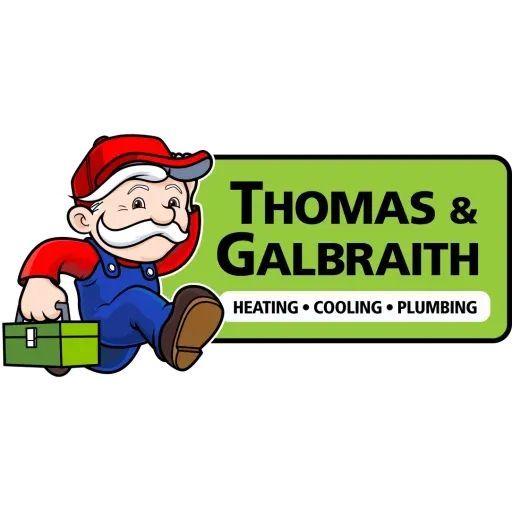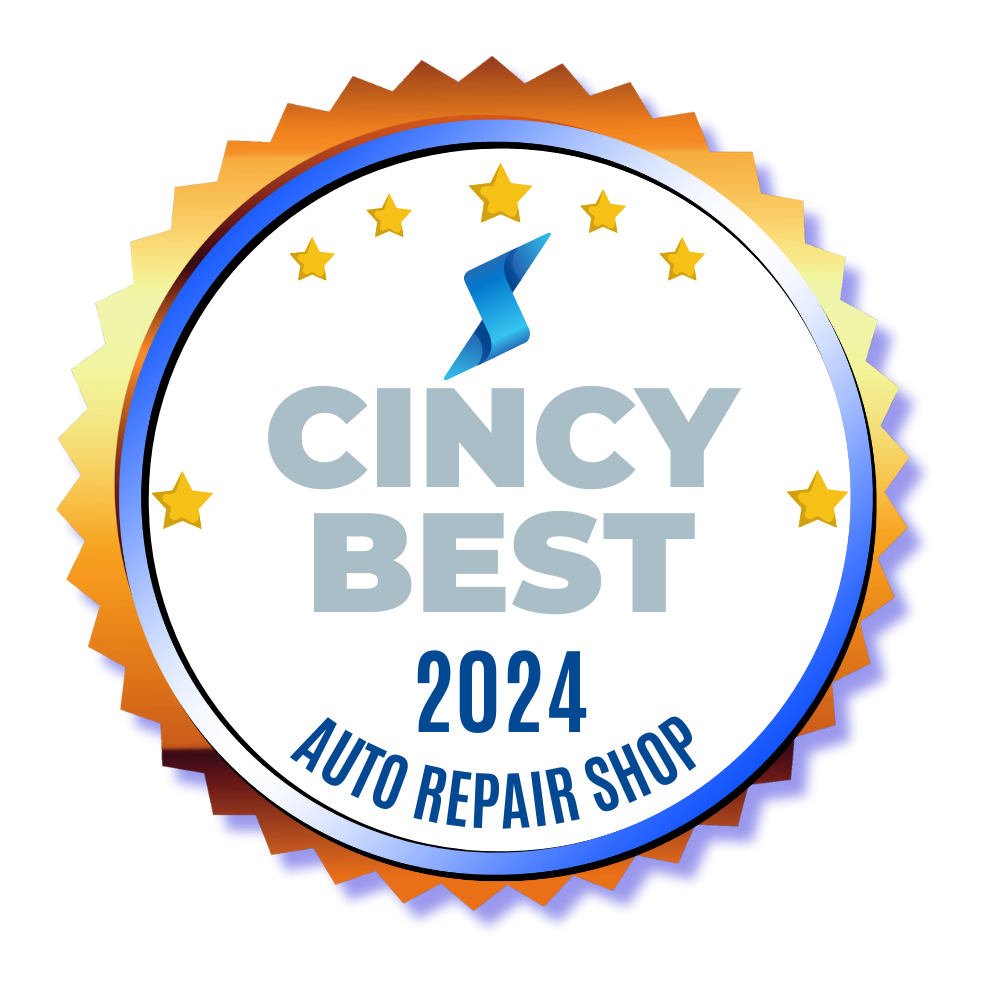Frequently Asked Questions
At Snyder's Car Care Provides
You the Highest Level of Service
Located in the heart of North Cincinnati in West Chester at the corner of 747 and Mulhauser Rd, our automotive repair shop is central to serving surrounding areas like Mason, Liberty Township, Springdale, Sharonville, Evendale, Blue Ash, Dearfield Township, Fairfield, and Wyoming, Ohio.
Answers to Common Automotive Questions
Find answers to someof your automotive questions below, or call us at 513-860-4444
-
Air Conditioning; How do I know if my Vehicle’s Air Conditioning System needs repairs?
You will normally only be seeking service on your vehicle’s air conditioning system when you notice your vehicle is no longer cooling as it should, or when it isn’t working at all. Our qualified Technicians will most diagnose the cause of your A/C problem by performing various tests to detect leaks or other problems with the system.
-
Air Conditioning; What kind of maintenance needs to be done on my Vehicle’s Air Conditioning System?
Air conditioning systems require minimal maintenance. Generally a visual inspection per the manufacturer’s recommended schedule is sufficient, unless there are symptoms that may indicate a problem.
-
Belts and Hoses; When should I have my belts or hoses replaced?
According to a recent survey, nearly one third of all vehicles and light trucks on the road have belts or hoses that should be replaced. Proper maintenance of your vehicles belts is and easy way to protect your cars reliability and prevent more costly repairs down the road.
Losing a belt today can mean big trouble for the engine because serpentine belts are used on most engines to turn the water pump, alternator, power steering and air-conditioning compressor. If a belt snaps, everything is lost and you may be stranded. Older cars use individual V-belts for these various accessories. A blown hose could result in your vehicle’s engine overheating and can cause additional engine damage.
“It’s not easy to know the true condition of a belt or hose by its outward appearance, because most belts and hoses fail from the inside out, We recommend the every four year rule for replacing belts, radiator and heater hoses to prevent your car from breaking down.” Rubber hoses can become hard and brittle, deteriorating with age and exposure to heat, causing the hose to split, blister or leak. Belts also break down with heat, mileage and age. Every time a belt passes around a pulley, it bends. Flexing produces heat that causes the rubber to harden over time. Externally if the belt shows signs of cracking this is a sign the belt is breaking down. In addition, if the belt is loose or slips, the wear process can be accelerated.
-
Belts and Hoses; What are typical repairs for these?
Hoses should be checked at each oil change for age hardening (or softening) by pinching. Any hose that feels rock hard or mushy is due for replacement. Leaking, visible cracks, blistering or any other visible damage on the outside of the hose would also indicate a need for replacement.
The clamps should be replaced when new hoses are installed.
V-belts should be replaced every three to four years or 40,000 to 50,000 miles.
V-belts and serpentine belts should be checked for looseness.
Replace the timing belt between 60,000 and 90,000 miles or based on the manufactures recommended service interval specified in the owner’s manual. Replacement of the timing belt is extremely important.Do I really need to change my timing belt? YES. The failure of a timing belt in many cars can result in extensive engine damage. The cost of replacing a timing belt is much less than the cost of engine repairs after failure.
-
Brakes; What does Brake Service Involve?
Ever wondered why your brake light is on? Is the brake pedal mushy? Do you have a squealing sound when you apply your brakes? These are just some of the signs of a potential issue with your vehicles brakes. The following article helps give you the knowledge you need in order to make an informed decision about what steps are needed to keep your brakes working properly and being safe on the road.
As a father of a teenage driver, I share with many of you the daily worries of having my new driver out on the road and carry the natural worry that both the vehicle and her are safe. One of the most important aspects of the car is its brake system. If you are familiar with vehicle braking systems, then you may read on since this is geared more towards a few light tips on brakes as well as answering some of the misconceptions both shops and owners make with regards to the vehicles brakes.
-
Brakes:What makes up the brake system?
The brake system contains brake pads, lines, discs, shoes, calipers, rotors, sensors, master cylinder, and fluid. Not all cars have each component. I want to talk to you about the brake fluid and its reservoir. Most vehicles today are equipped with a censored brake fluid reservoir. Unlike older vehicles, this type of unit is standard in today’s cars with safety being the regulatory reason as well as a monitored form of the brake fluid level.
Any brake fluid reservoir that has a wire attached to it, usually indicates that it is a censored unit. This means that you should never have to add brake fluid to the reservoir. Never! This is a sealed system in which the level of brake fluid is monitored by the sensor. If the level gets too low or below the minimum line it will trigger your brake light to come on and you’ll see it on the dashboard. This is where shops and drivers sometimes make errors. Rather then realizing the light is on for a reason, folks just tend to add brake fluid. The light goes off and everybody thinks the problem is solved. This isn’t accurate.
-
Brakes; What should I watch or listen for?
Brake fluid usually becomes low for one of two reasons. First, you have a brake fluid leak somewhere. If you just add to the reservoir, not only does this not fix the leak, but instead the potential for identifying the problem is now reduced because the brake warning light is no longer on. Second, brake fluid levels will decrease as brake pads become older. I like to say that brake pads are like sponges, the older they are, the more fluid they require. In addition, once you have your brake pads replaced, you’ll see that the brake fluid level goes back up in the reservoir. This is due to hydraulic pressure usage but when I explain things to people.
Proper brake repairs involve replacement of the brake pads, Brake rotors need to be replaced if before or after machining the minimum thickness is below that regulated by law. Repairs become more involved if calipers or brake hoses/brake lines have failed or become damaged or if any component of the ABS Brake system has failed or become damaged.
-
Brakes; How do I know when to replace my brakes?
Brakes should be inspected every 3 months or 3,000 miles. A grinding or squealing noise when you press on the brake pedal is an indication that metal parts of your brakes are scraping together. Regular inspection and replacement when necessary of brake parts can help you avoid more extensive and expensive repairs.
-
Cooling / Heating System; What should be regularly inspected?
Cooling System
Keeping your vehicle’s heating and cooling systems operating properly is vital to the life expectancy of your car. Having you vehicle checked regularly can help identify possible issues before they become more serious. Regular inspection of the below listed items is recommended.
cooling sensor
heater core
heater hoses
radiator
radiator cap
radiator hoses
radiator fan/fan clutch
anti-freeze
water pump
thermostat
fan belts
-
Cooling/Heating System; How does my vehicle generate heat?
The heat that is generated by your engine is used to warm the air that flows into the passenger compartment.
-
Cooling/Heating System; How do I know if there is a problem?
Temperature light may illuminate
Temperature gauge readout is past normal or reads hot
No heat is being produced inside the vehicle
-
Cooling/Heating System; What kind of maintenance should I be doing?
Anti-freeze protects your vehicle’s engine from overheating and from freezing up. Check your owner’s manual or contact your service provider for your manufacturer’s recommendations for replacement of the anti-freeze in your vehicle.
Complete inspection of radiator system
Pressure test the system to check for leaks
Add flush chemicals to the radiator
Flush cooling system/back flush system
Refill system with approved antifreeze
Add cooling system conditioner as needed
-
Electrical System; What should I have checked and how often?
Your vehicle’s electrical system consisted of a battery, a starter, and an alternator. As automobile’s electrical systems have become more advanced, this system now includes computer-controls, sensors and other components, making diagnosing and repairing your vehicle much more complicated.
The electrical systems require professional care. Few vehicle owners realize that they should have their car’s entire charging and starting system checked every two years at least. A malfunction or failure of any of the various electrical system components can hinder performance, reduce fuel efficiency, or failure at the most inopportune time leaving you stranded. Following is a partial list of components that make up your vehicle’s electrical system.
Alternator and Starter
Power door locks, Power seats
Power Windows,
Cruise Control
Air conditioning Controls
Battery and Cables
Instruments/gauges
Lighting Systems
Heater Controls
Warning lights
Electrical Wiring
-
Engine Diagnostics; Which warning lights show potential engine damage?
Upon your initial start-up of your vehicle, all the dashboard lights come on as a safety test. Once the test is complete, all lights should go off. If while driving your Check Engine light comes on verify, immediately all the other lights and gauges. Check for coolant light or oil light? If either of these lights illuminate pull over as soon as safely possible and turn vehicle off. Do not drive a vehicle that is overheating or the red oil light is on. These two lights/gauges are telling us engine damage may occur. Take it to a professional technician to have it checked.
If it is just the Check Engine light, verify the vehicle is running smoothly/okay. If vehicle is running poorly, again use your best judgment; A misfiring vehicle can cause engine damage or catalytic convertor damage. It is best to take it to a technician familiar with modern diagnostic procedures. This may be a simple problem, but left alone it may result in an expensive repair. Don’t ignore these warning lights!!
-
Engine Diagnostics; What are some warning signs that may catch my attention?
Engine services encompass a wide variety of the repairs that you may need for your car. Symptoms that may indicate engine trouble include:
Check Engine Light
Poor Erratic Performance
Won’t Start
Stalls
Oil Leaks
-
Engine Diagnostics; What repairs are performed to keep the engine running properly?
The engine comprises most of the moving parts in your vehicle; accordingly there are many services that may be required to keep it operating properly. Over the life of your car you might expect to have any or all of the following repairs:
Intake Manifold or Intake Gasket replacement
Engine Head Gasket or Head Replacement
Fuel Injectors / Fuel Pump
Engine Rebuild/Remanufacture
Maintenance / Major Tune-up
Replacement of the Timing Belt
Preventative maintenance and early diagnoses of symptoms may alleviate more extensive/expensive repairs. Bring your vehicle in for routine oil changes and maintenance, brake inspections, tire rotations, fluid flushes, etc. We will inspect your vehicle and let you know about other items that may need your attention.
By using the same technician/company you ensure your technician is familiar with your vehicle and has an opportunity to point out small issues before they become big problems that could leave you stranded on the side of the road or, endanger your safety.
-
Exhaust System; What is the exhaust system?
The engine is connected to the exhaust system. The exhaust system reduces noise and protects the environment by reducing the by-products that are released into the atmosphere.
The exhaust system is comprised of a few very important components:
Catalytic Converter
Muffler
Tailpipe
Oxygen Sensors: Some vehicles have as many as four oxygen sensors
When the exhaust operates properly, the gases created during the fuel combustion process are carried safely away from the vehicle through the muffler and tailpipe.
Leaks in the system can allow dangerous exhaust fumes to leak into the passenger compartment causing discomfort and possible illness to people riding in the vehicle. If you notice that your vehicle seems to sound different, louder, or suddenly makes a deep rumbling sound when it’s running, this may be a sign of a hole or leak in the exhaust.
-
Fluid Services; What systems use fluid and how do I know when they are low?
Your vehicle is comprised of many systems that rely on fluids to keep them performing effectively.
Transmission Fluid: Deteriorating or Dirty transmission fluid can cause transmission issues. Changing your transmission fluid per your manufactures recommended service schedule helps protect against rust and wear.
Oil: To keep your engine running longer change your oil and filter every 3,000-7,000 miles according to manufacturer’s recommendations and driving conditions. We recommend every 3,000 miles for conventional oil and every 5,000 miles
Brake Fluid: Changing the brake fluid at regular intervals will reduce deterioration in the hydraulic parts associated with corrosion.
Coolant: To operate effectively, your cooling system should be checked once a year. The coolant should be changed every two years. Old coolant can gel and cause issues, it also begins to build up electrolysis which if left unchanged can begin to seep up through the wires causing electrical issues. (Sulfate damage)!
Power Steering Fluid: Changing your power steering fluid prevents problems caused by heat, friction and electrochemical degradation so that you continue to enjoy the easy turning and responsive handling you expect.
Fluid Leak Warning Signs
Dark circles of liquid on the driveway
Fluids abnormally low when checked
Warning lights on dashboard
-
Fuel System; What is the fuel system, what are common problems with it and can they be avoided?
The fuel system is a very important component on your vehicle. Many factors determine the condition of your fuel system, the age of your vehicle, the quality of the fuel used, driving conditions, maintenance history and the number of miles on the vehicle.
Potential fuel system related problems that may occur include:
stalling
hesitating
the check engine light may illuminate
poor gas mileage
“won’t start”
difficulty starting
surging
misfiring
Changing your fuel filter every 15,000-20,000 miles is the number one thing you can do to help protect your fuel system. If the fuel filter becomes clogged it makes all the other components work that much harder to push fuel through the system.
A fuel injection cleaning also helps with fuel economy. This process rids the system of carbon build-up. The EGR (Exhaust Gas Recirculation) components are also related to the fuel system.
Carbon deposit is the number one issue related to the fuel system. The by-product of burning gas is carbon build-up. That carbon build-up acts like a sponge. As gas is burned carbon deposits build up on the fuel system components. The deposits soak up fuel causing the car to think it is running lean and the cars on-board computer tells the fuel system to deliver more fuel. Once the deposits are saturated the car will adjust back. This process has the biggest impact on fuel economy. As the deposits grow, the harder the fuel system has to work, causing poor fuel economy.
The fuel system components are: the fuel tank, fuel lines, fuel pump and the fuel filter.
Fuel Tank: The fuel tank stores the fuel. Internal baffles prevent sloshing during stops and starts.
Fuel Pump: The fuel pump delivers the fuel from the fuel tank to the lines.
Fuel Lines: The Fuel lines/hoses carry fuel up to the injectors at the engine.
Fuel Filter: The fuel filters job is to trap any debris, keeping it from affecting the other components.
-
Maintenance; What should do for maintenance on my vehicle and how will it help?
Many parts on your vehicle are interrelated. Ignoring maintenance can lead to major issues: individual parts or an entire system could fail. Neglecting even simple routine maintenance, such as changing the engine oil or checking the coolant, can lead to poor fuel economy, or costly breakdowns. If your vehicle still has manufacturer’s warranty, then not doing the required maintenance could void your warranty. Properly maintaining your vehicle is less expensive than more costly repairs due to neglect.
Read your vehicle warranty very carefully. The manufacturer’s warranty and/or your extended warranty may depend on having certain maintenance performed according to a pre-determined schedule. Make sure all work is done exactly as specified in the manufacturer’s maintenance schedule and thoroughly documented. Bring us your vehicle’s service manual and we will stamp it as services are performed. This is very useful if ever you had a warranty issue that required going back to the dealer. Documentation is everything.
Todays vehicles require Maintenance Flushes:
A Brake Flush rids the system of trapped moisture that can eat away at hoses and caliper bushings etc.
A Power Steering Flush also rids the system of contaminated fluids that swell up the power steering hoses from inside and can lead to failure of the hoses, and pump etc.
The Cooling System Flush eliminates electrolysis from climbing up wires and corroding them. Also the inside of hoses are damaged by old fluid.
A Transmission Flush rids system of old degraded / burnt fluid that has lost its consistency and effectiveness.
We are highly qualified to do your maintenance.
The Magnusen-Moss Act of 1975 prohibits new car dealers from implying or denying warranty service because routine scheduled maintenance was performed at an independent repair facility. (Magnusen-Moss Act (1975) Title 15 Chapter 50-Section 2301-2312.
In most cases your non-warranty maintenance can be performed by either a dealership or your own technician. (Double-check your warranty to be sure!
Our independent repair shop facility can perform these services at costs that are very competitive with dealerships. We have access to the same information the dealerships have. We provide the exact same maintenance services they do.
Use Maintenance to Establish a Relationship
The shop you use for your maintenance should be the same one you will want to do your major repairs. This allows you to establish a relationship with the technician and the technician to become familiar with your car and its history. This will be especially helpful when you are faced with a major repair.
A few things we see as these relationships develop are. We let you know ahead of time if a major service is coming up. We also have sold many cars from one customer to another as we know the service records and we can say yes, This is a good car!
-
Oil Change; What are the benefits and how do I know when it's time for an oil change?
Changing your vehicle’s engine oil is the single most important thing you can do for your vehicle. The primary function of engine oil is to lubricate the internal engine components. As oil ages it breaks down it becomes less effective at lubricating. Once oil begins to break down it no longer protects the components from rubbing together and causing wear. Doing regular engine oil changes also prevents the chances of running to low on oil.
The recommended Manufacturer maintenance schedules typically suggest changing your oil every 3,000 -7,000 miles. We recommend every 3,000 miles for conventional oil and every 5,000 miles for synthetic. At a minimum oil should be changed twice each year.
Always check your gauges while driving. Low oil pressure could be a sign you are low on oil and you are developing an issue. If your oil light comes on or the gauge shows that the pressure is very low, stop the vehicle and check your oil. If you drive with a red oil light, it may be too late and engine damage will most likely have occurred. “Do not drive your vehicle if the red oil light comes on!” Have it inspected immediately!
If you smell burning oil or see a leak, have checked as soon as possible before the issue becomes a more prominent or costly issue.
-
Suspension; What components make up the suspension of my car and how are suspension problems diagnosed?
Your car’s suspension is a system of shock absorbers, struts, coils, springs and stabilizer linkages that connect your vehicle to its wheels and support its weight. The vehicle’s ability to maintain contact with the road surface and absorb shock along with it’s cornering ability are all dependent upon the suspension.
Suspension can be optimized either for performance ( sports car) or a smooth, comfortable ride ( luxury car).
Basic Components:
The struts, shock absorbers, coils, springs and tires all affect the driver’s ability to control the car, while keeping passengers comfortable by reducing the impact of road noise, bumps, and vibrations.
Springs: Coil or leaf springs handle the bumps and potholes that vehicle hits during a normal day of driving. Tightly wound springs are built for handling. Loosely wound springs provide a smoother ride.
Shocks: Shock absorbers handle the abuse produced by the rebound of your cars springs.
Struts: A strut system replaces the shock absorber and spring combination of a conventional system and places them into one unit.
Tires: Tires are where the rubber meets the road!! Tires must be in good condition for the vehicle suspension to work properly. Under-inflated, worn out or otherwise faulty tires make it tough for the suspension to do its job.
Diagnosing Suspension Problems
Easy test: Press downward with your body weight on one corner of the vehicle. If it bounces more than once, the shock or strut is probably worn and needs replacement soon.
Other symptoms: If your car leans excessively while in a curve or if you see little scallops (cupping) in your tire tread, these are signs that something may going on with your suspension.
We can perform a more detailed diagnostic check and determine the exact cause of the problem and recommend repairs before additional damage occurs.
-
Tires; Why are they important to keep an eye on and how will I know when to have them replaced?
Tires are one of the most important components on your vehicle. Proper inflation is a very important part of tire care Checking air pressure should be standard procedure on any visit to your vehicle service center for oil services, tire rotations, or general maintenance and repair.
If you are traveling, always have your tire pressures checked before getting on the road. For do-it-yourselfers, you can find this information in your owner’s manual, posted on the edge of the driver’s door, on a door post, or on the inside of the glove box door. Be sure to check inflation when tires are COLD: before driving or after vehicle has been sitting for at least an hour. Use a good quality tire gauge. And don’t forget to check the spare!
Tires are one of the most important safety features on your vehicle. Tires are the only part of your vehicle that actually maintain contact with the surface of the road.
When you are thinking about your tires, here are a few things to keep in mind:
Over-inflated: Proper tire pressure varies by tire size and vehicle size and weight. Check the door jam of your vehicle for information on the proper air pressure for your car’s tires.
Under-inflated: Under-inflated tires have less than the recommended air pressure. Under-inflated tires can cause roll in your vehicle or issues while making turns. A under-inflated tire may get super heated and blow out. Keeping your tires properly inflated is an easy way to improve fuel mileage also. Always check tire pressures before traveling.
Old/Worn tires: Tires with less than 4/32” tread left should be replaced. Most tire manufacturers recommend replacement after 6 years regardless of wear or mileage. Tires may wear unevenly so inspect all surfaces thoroughly. Ensuring your tires are in good condition will help keep you and your loved ones safer on the road.
What should you do if the tire pressure light comes on the dash?
In many cases adding air pressure in your tires will eliminate the Tire Pressure Monitoring System (TPMS) warning light. Tire pressure loss of only two pounds is enough to illuminate the TPMS warning light. In all cases where one or two tires have significantly lower air pressure than the others, a trained technician should examine the tire to determine the cause and examine the casing for wear etc.. Some TPMS systems require special tools to communicate with the onboard vehicle computer. Our Advanced level technicians are trained and equipped for this technology.
Tire Rotation: The main purpose of rotating tires is to achieve more even wear for all tires on the vehicle. It is recommended that you rotate your tires at least every 5,000-7,000 miles or uneven wear may develop.
Alignment: Getting an alignment is very important to the life of your tires! On average a vehicle is driven about 1,000 miles per month or 12,000 miles per year. A car with an improper alignment can begin to wear the tires with the first 500 miles. An alignment also helps your vehicle go down the road straight, so you do not have to keep adjusting for a pull left or right.
Different tires for different driving conditions
All-season tires do provide better traction in winter, however they can’t handle the heat created in high speed driving.
Passenger car tires are for vehicles that do not haul weight, such as trucks or an Suv towing trailers.
Summer/dry performance, or ultra-high performance tires, won’t grip on snowy or icy roads and they’re not designed to drive in temperatures below 45* F because the rubber hardens, decreasing flexibility.
The Spare Tire: The spare tire is your lifesaver when a tire goes flat. Don’t skimp on this piece of safety equipment.
The list above is a short introduction to your vehicle’s tires. Take the time to get to know your tires and consult your mechanic with any questions along the way.
-
Transmission; What is the transmission and what are signs of possible transmission issues?
The Transmission is the part of your vehicle that helps you move along your way. The transmission goes through different gears as it increases and decreases in speed. There are generally two types of transmissions. An automatic transmission and a standard/manual transmission.
Standard/Manual
Cars with manual transmissions, (these consist of clutches and a stick shift,) usually are less expensive at purchase than automatic transmissions. Manual transmissions make better use of the engine’s power, they tend to have better acceleration times and are generally less expensive to maintain. They also use less fuel. So why have so many of us have chosen automatic over manual? Manual transmissions are much harder to learn to drive. The manual transmission requires you to loose your left foot for the clutch and your right hand for shifting the gears. In today’s stop and go traffic or traffic jams, this is very difficult and requires your full attention.
Automatic
Today’s drivers want to be able to multi-task. Do you drink your coffee on the way to work. (This is much harder to do if you have a standard shift.) If functioning properly the automatic transmission shifts gears with out the jolt action of a standard shift. Proper maintenance of you transmission is very important to the life of your vehicle.
Possible symptoms of transmission issues:
Leaking Fluid: If you notice fluid leaks try to determine the color of the fluid. Transmission fluid is generally Red and may indicate that you have a leak. The transmission fluids job is to cool and lubricates the transmission components as they move. Low fluid can cause the transmission to overheat and the transmission components to fail.
Won’t go into gear: When an automatic transmission hesitates or has issues engaging “Park” or “Drive” instead of shifting quickly into gear there’s likely an issue with the transmission. If it is a standard/manual transmission, the issue
could be in the clutch or the clutch hydraulics as well as the transmission itself.
Check Engine Light: The check engine light warns you that the vehicle’s computer has detected a problem in one of the operating systems. It could be the transmission, or it could be the engine, or exhaust, etc. It is best to have this checked out by a trained technician with the proper diagnostics tools.
Something feels wrong: Grinding and shaking as you increase or decrease speed or shift gears can be a symptom of a serious transmission problem.
Makes funny noises: A transmission that is operating properly should not make noises. If you hear humming or whining noise, it’s a problem. Get it checked out. Note that the noises may only happen intermittently at first but will happen more and more frequently over time.
Snyder's Car Care Provides Auto Repair and
Maintenance for Commercial Fleets
Contact A Fleet Maintenance Specialist Today
Contact Us
We will get back to you as soon as possible
Please try again later







